The Ministry of Defence has provided clarity on the measures taken in response to the Service Inquiry into the loss of the F-35B Lightning ZM152 (BK-18) of 617 Squadron in November 2021.
The aircraft was embarked on HMS Queen Elizabeth when the unfortunate incident occurred.
According to the inquiry’s findings, there were concerns about the 617 Squadron as it “was under strength, morale was low, there were insufficient Quality Assurance checks being conducted at Marham and general readiness for FORTIS was lower than COMUKCSG had been led to believe.”
In an official response, Baroness Goldie, Minister of State, Ministry of Defence, commented on the corrective actions taken. “As a direct result of the lessons identified during and post Operation FORTIS, embarked engineering workforce levels were significantly increased, in recognition of the additional workload and fatigue associated with embarked operations.”
She further highlighted that since the incident, “RAF Marham has been subject to two external third-party audits, with the most recent concluding that previously identified shortfalls had been resolved, or that appropriate corrective action plans were in place.”
To ensure continued adherence to quality and safety standards, “the unit maintains a full internal quality audit programme with regular continuous-improvement events and independent engineering standard evaluations.”
Baroness Goldie stressed that they are continually monitoring and optimising the readiness for embarked operations, ensuring that any issues are addressed in regular “Carrier Strike multi-disciplinary meetings.”


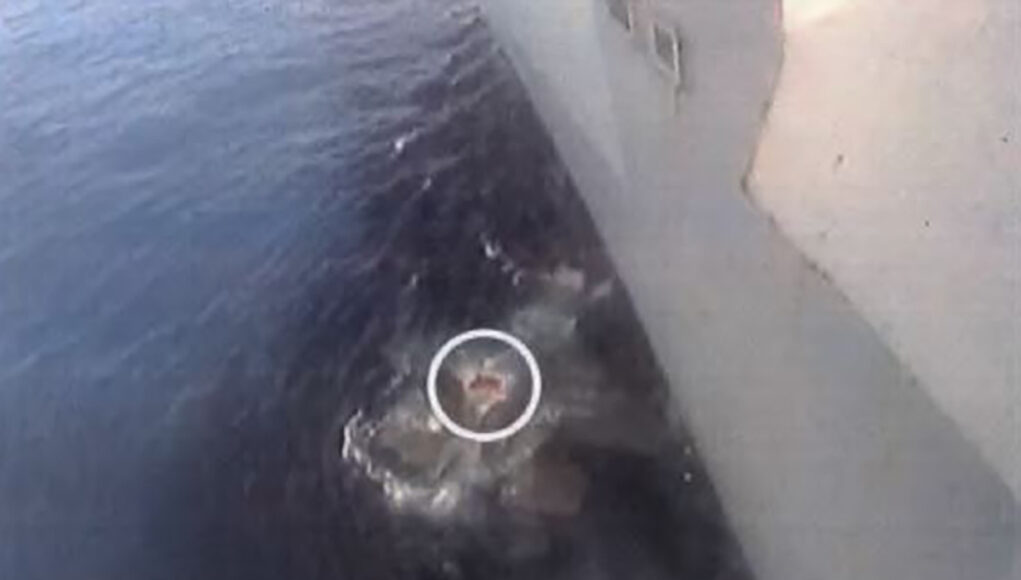
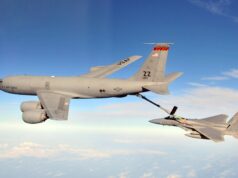
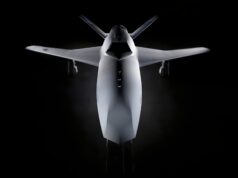

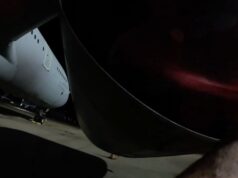
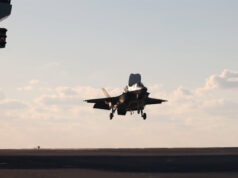
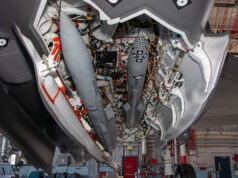

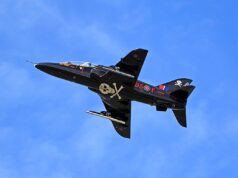
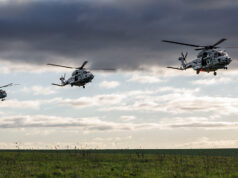


The reason behind the incident was due to the bad design of the engine cover, which in windy weather can (and this case did) get blown inside the engine and not be seen. The pilot and ground crew on carrying out first parade checks presumed the cover had been blown away into the sea (As had happened before) the solution is simple, redesign the cover, so it cannot find a new home inside the engine. What’s so f-ing hard about that but as this is the British MOD, they will waste millions having reviews after reviews before sub contracting the production of the new covers to China in which to save a few pennies No wait, I did say British MOD, to that end their solution will be to get rid of the F35
They have designed and introduced a new intake cover that fits externally to the airframe. The S duct intake design of the F35 means it can be very difficult to see a intake blank if it’s has gone walkies. I do have a picture of the new intake blanks if I can add it to the comments.
Relatively easy to add a V shaped pair of composite battens to the front covered with something softer than the special radar messing paint.
I think what this does truthfully point to us just how expensive capability gaps are.
Capability gaps -> personnel gaps -> knowledge gaps -> institutional skills fade -> accidents
Generating the deck crew for the two QECs is a massive undertaking that is about 1000 bodies plus training pipeline.
How many people are still around who served on Invincibles? When Invincibles were OOS in 2012 the 2016 date for QEC IS seemed less crazy.
When the real IS date of QEC transpired then the yawning chasm became clear for all to see.
Thing is, covers are part of the supplied aircraft equipment. Which means they came from Lockheed Martin. The engine intake blanks will be the same for the A, B and C versions.
The USMC have been operating the B from their Gator carriers for a while now, whilst the USN has only just carried its first carrier deployment with the C version. The A is C likely to be in sheds, sun shelters and HAS, so don’t be affected by wind like the other two, when on a ship.
So the question must asked to both the USN and USMC have they had similar problems and what did they do to rectify it?
I can imagine in the short term, as part of the pre-flight checks. Is for a bod to climb into the intake and look down it to see if a blank has gone down it.
Correct.
“A sweeping report on sustainment of the F-35 from the Government Accountability Office found that a lack of depot capacity is hurting the fighter’s mission capable rates, with other problems in access to technical data, availability of parts and over-reliance on contractors for maintenance.”
LINK
Davey B wrote:
“” Which means they came from Lockheed Martin.””
I’ve read somewhere that the RN procured its own set of covers which are supposed to be better than the LM ones (currently going through my collection of aircraft mags to find the source)
But the events which led up to the crash was a comedy of errors.
INTERIM REPORT FROM THE SERVICE INQUIRY (SI) INVESTIGATING THE ACCIDENT INVOLVING F-35B ZM152 ON HMS QUEEN ELIZABETH ON 17 NOV 21
2. On 17 Nov 21 HMS QUEEN ELIZABETH (QNLZ) was operating in the eastern Mediterranean six months into her maiden Carrier Strike Group deployment, Operation FORTIS. United States Marine Corps F-35B aircraft had commenced flying operations at 06:30 and two UK F-35Bs, from 617 Squadron (Sqn), were programmed to launch at
11:45. The lead aircraft, ZM152 taxied to the runway for launch at 11:37. The aircraft converted to short take-off mode and at the direction of the Captain of the Flight Deck the pilot conducted engine run up checks, confirmed all engine indications were normal, selected take-off power, 97% Engine Thrust Request (ETR), and released the brakes.
3. The pilot reported that the initial acceleration felt normal, but then decreased. On checking the engine displays they discovered that the power was low, at 74% ETR. The pilot then selected maximum (100% ETR) but the engine continued to deliver lower than expected power. Due to the resulting low speed of ZM152, the pilot attempted to abort the take-off but was unable to stop the aircraft before the end of the ramp and ejected. The ejection was successful, the parachute deployed, and the pilot landed on the flight deck suffering only minor injuries. The aircraft impacted the sea and was seen to be afloat
passing down the port side of the Ship before it subsequently sank.
Background
4. ZM152 last flew on the 13 Nov 21 and required no maintenance activity before the preparation for its flight on 17 Nov 21. During the day prior to the accident, QNLZ transited through the Suez Canal on her homeward passage. As a security measure for that passage all F-35Bs on the flight deck had Red Gear fitted. Red Gear, which included
engine intake blanks, was designed to protect from ingress of foreign objects. That night, 617 Sqn engineering personnel serviced ZM152 to prepare it for flight the following day.
And a little more detail as per Navy lookout which gleaned the info from the official report, but have rewritten it into a much easier digestible format
A key misstep was the way that red gear items used to protect the aircraft were handled by engineers. The storage solution and logging methods for recording the issue or return of red gear was weak and there was no system in place that would immediately make it obvious one item must still be on an aircraft due to fly. The risks from FOD (Foreign Object Damage) were always treated very seriously but red gear was perceived more as a risk to other aircraft rather than the aircraft it was fitted to. This is despite the fact that 4 instances of red gear being sucked into F-35 engines had been recorded by US operators although they had been very fortunate, none resulted in the loss of an aircraft.
The design of the red gear for the F-35 had gone through various iterations and was not entirely satisfactory. Ironically the text ‘Remove before flight’ was printed on the intake blanks by the manufacturer but the characters were found to peel off and present a FOD hazard so 617 Squadron engineers removed the lettering. A pop-pin used to secure the intake cover in place was not always used and there were numerous instances of red gear being blown off aircraft on the flight deck, including on the day of the accident and several had been lost overboard.
Due to these problems, red gear was not routinely fitted to aircraft on the flight deck when the ship was at sea. In this instance, the Government Special Access Programme Security Officer (GSSO) responsible for maintaining the secrecy of some aspects of the F-35, ordered them to be fitted for the visit to Oman and the transit of the Suez Canal, although gave no instruction when they should be removed. The intake ducting is designed to shield the fan at the front of the F-35’s engine from radar in order to help maintain the aircraft’s stealth. This feature is covered when it might be viewed close up by those without security clearance.
The reason the engine blank was left in the engine was primarily down to faulty assumptions made by two engineers tasked with conducting routine maintenance on BK-18 which was due to fly the following morning. The combined Post Operation Servicing (POS) and Before Operation Servicing (BOS) schedules mainly involved thorough inspections. The first engineer went onto the flight deck and conducted his work which involved removing the right blank to inspect the engine. When work was complete he took the single blank back to stores but could not carry the full set of red gear. The second engineer was delayed as he was required to assist with moving containers in the hanger so there was no handover. Working alone he did not see the left-hand blank which had likely been blown down the duct and was almost invisible. At night 617 engineers believed they were not allowed to use white light torches so as to preserve the night vision of the bridge team – the use of coloured light further reduced the chance of spotting the blank.
Well why they did not copied the USMC procedures?
And what about the ‘do not fly’ attachment to the undercarriage that had been left there , which the pilot did pick up on in his pre flight walkabout ?
Have they explained that as well or is it lost in ‘noise’
Could they not simply use a camera on the end of probe, something they can push down rather than a person climbing in?
You could spend money on a camera and pile. But an 18 year old lad/lass is cheaper and readily available.
The RAF “maintainers” (hate that word) have traditionally checked an engine intake and the first v VC impressive stages, by sending fine one down the intake. The exhaust can be a bit more tricky due to the afterburner components.
With a Harrie/Sea Harrier the fist stage of the Pegasus was within arms reach. So no need. On Jags it was fairly simple, as the intakes didn’t have any air deflectors or moveable Ramos for supersonic flight. Tornado was different as it had a moveable ramp, that was later fixed on the GR versions. Typhoon, you would have to be much more careful, as there is radar absorbent material (RAM) in the forward part of the intake.
I’d imagine climbing into the intake of the F35 will be fairly tricky. Not only due to the aircraft’s RAM, but also due to the S shaped intakes, plus trying to get around the diverterless intake bump. So a camera on a pole might be the better option!
In order to sweep this fully under the carpet and based on previous experience; it’s better to carry out third party audits so that nobody in a position of responsibility will be identified as incompetent other than some expendable crew chief. While redesigning an engine cover qualifies as common sense and will probably cost very little, it does not remove the focus on the upper echelon who may have ignored the problem with ‘low moral’ and reduced staffing. Grandma can sew on a “remove before flight” lanyard for around £3!
Engine cover do not appear to need redesign since it is working well for USMC.
Incorrect, read the report
As my dear old granny used to say “for the sake of the tar the war was lost”
For want of a shoe, the horse was lost. For want of a horse, the rider was lost. For want of a rider, the battle was lost. For want of a battle, the kingdom was lost, And all for the want of a horseshoe nail.
Your dear old granny lost half the story 😂
Probably conflating with the old aphorism, don’t spoil the ship for a ha’porth of tar.
ahh ha yes …thats what I did..(see my reply ) old age has conflated the adage .. 🙂
mmm I thought there was a similar chain regards tar on a ship? – if not I have conflated the story with the ‘”lost a ship for a hap’worth of tar” phrase.
but yes it may have been that horsey thing she used to say …
it was a long time ago 😉
F35B have been in use by the USMC , and in smaller numbers by Italians, there is no news of this issue occurring.
The issue here is that RN was for more than decade without carrier aircraft and now have to learn everything again…
Italy will be doing a long deployment with their carrier , lets see how that turns out first
It’s following the procedures that’s the key. And establishing that procedures covering the engine cover removal before takeoff are adequate and robust. It’s no good just having a tick list. Plus, the engineering crew’s officers should be retrained in the requirement for attention to detail in this matter, so they are aware of the issue, can lead properly and ensure that it does not happen again
Disciplining some poor overworked bod over this will be conterproductive. Everyone is going up a steep learning curve with the F35b. Fortunately the pilot managed to eject and was lucky not to get run over by the ship
Perhaps a yellow rope attached to the cover clipped onto an obvious part of the aircraft would prevent this happening again ?
Well said spending money to line external bodies pockets while failing to fix a simple fix
Can everyone move on from this now. Even after decades of F18’s flying from US Navy carrier’s, they still have accidents and losses. Carrier aviation is dangerous. Shit happens sometimes. Lessons are learnt, procedures adjusted, and we move on. People are going to have to be less sensitive about this sort of thing. We want to see busy flight decks, the danger levels increase. It will happen to other carrier operating nations at some point. That is a guarantee.
It’s really worth spending an hour reading the official report, it does an excellent job explaining the multiple issues and procedural problems that directly led to the loss of ZM152. But it also describes the indirect background context of a ship and squadron that were undertrained, undermanned, tired, overworked and stretched to the limit – all hampered by COVID restrictions. With home finally in sight, a slackness in following procedures (some inadequate to start with) was also appearing. In hindsight its clear CSG21 should have been delayed a year, but recommending that to the PM would have been a disaster for the RN, RAF and the MOD.
This report is so valuable that it’s almost worth losing an F-35 over. Rubbing people’s face in the truth should be done more frequently. Our politicians’ capacity to ignore it is a contant amazement.
Just been reading this on the F35 and how the Usa are buying more F35 to cover the down time apparently it is taking 144 days to fix one aircraft does this mean that Uk will suffer the same problems
WASHINGTON — A lack of spare parts and technical data, poor training of maintainers, and a lagging effort to expand repair depots are dragging down the U.S. military’s ability to keep the F-35 Joint Strike Fighter in the air, a government watchdog said in a report released Thursday.
And the problems hindering the military from taking over more sustainment activities from the prime F-35 contractor, Lockheed Martin, will cost the government billions of dollars each year if a more cost-effective strategy isn’t found, the Government Accountability Office wrote in its report.